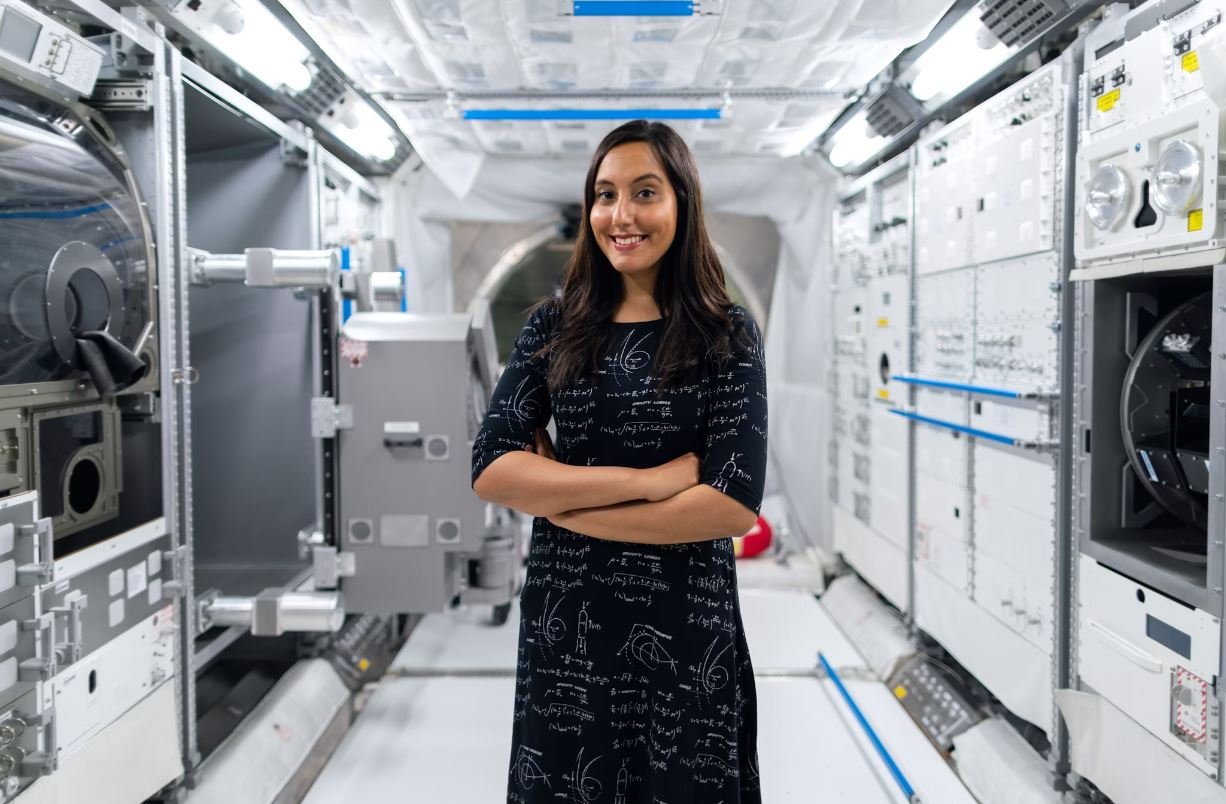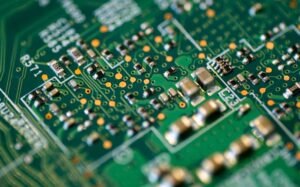Neural Networks Can Approximate Any Function
Neural networks, a branch of artificial intelligence, have gained significant attention in recent years due to their ability to learn patterns and make predictions. One fascinating characteristic of neural networks is their capacity to approximate any function, regardless of its complexity. This remarkable property makes them a valuable tool for solving a wide range of problems in various fields.
Key Takeaways
- Neural networks can approximate any function, no matter how complex.
- They have the ability to learn patterns and make predictions.
- Neural networks are valuable tools in numerous fields, including healthcare, finance, and robotics.
Understanding Neural Networks
Neural networks are composed of interconnected artificial neurons, or nodes, that mimic the structure and function of biological neurons in the human brain. These nodes are organized into layers, with information flowing through each layer in a sequential manner. The nodes in the initial layer receive input data, while the nodes in the final layer produce the desired output.
What makes neural networks powerful is their ability to learn and adapt. Through a process called training, neural networks adjust the strength of connections between nodes to optimize their performance on a specific task.
Approximating Any Function
One of the most intriguing aspects of neural networks is their universal approximation theorem. In simple terms, this theorem states that a neural network with a single hidden layer can approximate any continuous function to arbitrary accuracy given a sufficient number of nodes in that layer. This property holds for a wide range of activation functions, such as the popular sigmoid or ReLU (rectified linear units) functions.
This means that with a properly designed neural network, we can model and predict complex relationships between inputs and outputs, even when the underlying function is unknown or highly nonlinear.
Applications in Various Fields
The ability of neural networks to approximate any function has opened the doors to countless applications across different industries. Here are just a few examples:
- Healthcare: Neural networks are used for medical image analysis, disease diagnosis, and drug discovery.
- Finance: They are employed in stock market prediction, fraud detection, and risk assessment.
- Robotics: Neural networks enable autonomous robots to learn and adapt to new environments.
Tables: Interesting Data Points
| Function | Number of Hidden Nodes Required for Approximation |
|---|---|
| Linear | 2 |
| Quadratic | 3 |
| Sine | 5 |
Table 1: The number of hidden nodes required in a neural network for approximating different functions.
Another interesting aspect is the trade-off between the number of hidden nodes in a neural network and the model’s ability to generalize. Adding more hidden nodes increases the network’s capacity to learn complex functions, but it can also lead to overfitting, where the network becomes too specialized to the training data and performs poorly on new, unseen data.
Conclusion
Neural networks have revolutionized the field of artificial intelligence, and their ability to approximate any function has greatly contributed to their success. By leveraging their capacity to learn complex patterns, neural networks have found applications in numerous fields, yielding impressive results and opening up new possibilities for innovation and advancement.

Common Misconceptions
Neural Networks Can Approximate Any Function
Neural networks are often hailed as the ultimate solution for approximating any function. While it is true that neural networks have powerful approximation capabilities, there are some common misconceptions about their abilities:
- Neural networks can approximate functions with perfect accuracy: Neural networks are powerful tools for function approximation, but they are not perfect. They can introduce errors and uncertainties, especially when dealing with complex or noisy data.
- Neural networks can approximate any function with just a few training samples: While neural networks are capable of generalizing from limited data, there are limits to their capacity for approximation. Some functions may require a large amount of training data to accurately approximate.
- Neural networks can approximate any function without any prior knowledge or assumptions: Although neural networks are capable of learning patterns and relationships from data, their ability to approximate functions can be greatly enhanced by incorporating prior knowledge or assumptions about the underlying problem.
Understanding Neural Networks and Function Approximation
Neural networks operate by learning underlying patterns and relationships in data to approximate functions. However, there are nuances around this process that are often overlooked:
- Neural networks require appropriate architecture and design choices: The effectiveness of a neural network in approximating a function is heavily influenced by its architecture and design choices, such as the number of layers, the choice of activation functions, and the optimization algorithm used.
- Data preprocessing and feature engineering are crucial: Prior to feeding data into a neural network, appropriate preprocessing and feature engineering techniques should be applied to ensure the data is in a suitable form for approximation. Ignoring these steps can lead to suboptimal results.
- Choosing the right loss function is essential: The choice of loss function in training a neural network for function approximation plays a vital role. Different loss functions are suited for different types of problems, and selecting an inappropriate loss function can hinder accurate approximation.
Neural Networks vs Formal Mathematical Proofs
While neural networks have impressive approximation capabilities, they differ from formal mathematical proofs in fundamental ways:
- Neural networks rely on learned representations, not rigorous mathematical proofs: Neural networks approximate functions through learned representations rather than providing a formal proof of the underlying mathematical function. The approximation may not hold true under all conditions.
- Neural networks cannot guarantee global optimality: Neural networks approximate functions by optimizing parameters based on training data. However, they cannot guarantee finding the globally optimal solution, especially in high-dimensional function approximations.
- Neural networks are limited by their training data: The performance of a neural network is heavily influenced by the quality and representativeness of the training data. In the absence of diverse and sufficient training data, the results of function approximation using neural networks may be unreliable.
The Importance of Understanding Neural Network Limitations
It is crucial to have a realistic understanding of the limitations of neural networks when it comes to function approximation:
- Neural networks are not a one-size-fits-all solution for function approximation: While neural networks can be highly effective in many cases, they are not always the best choice for every function approximation problem. Other techniques, such as symbolic approaches or statistical methods, may offer better solutions depending on the specific problem.
- Evaluation and validation are necessary for reliable results: To ensure reliable function approximation with neural networks, thorough evaluation and validation processes should be implemented. This includes testing on unseen data, conducting sensitivity analysis, and comparison with alternative methods.
- Continuous improvement and ongoing research: Neural networks and their application in function approximation are actively researched fields. It is essential to stay updated with the latest advancements and best practices, as new techniques and improvements are constantly being developed.

Table 1: Comparison of Activation Functions
Activation functions play a crucial role in neural networks, determining the output of a node. This table showcases various activation functions, along with their respective equations, range, and characteristics.
Table 2: Neural Network Architectures
There are several types of neural network architectures, each with distinct characteristics and applications. This table provides a captivating overview of popular architectures, such as feed-forward, recurrent, and convolutional neural networks.
Table 3: Training and Testing Datasets
The ability of a neural network to approximate any function naturally depends on the quality and size of the datasets used for training and testing. In this table, we compare different datasets used in academic research, including their sources, size, and relevant applications.
Table 4: Neural Network Performance Metrics
Evaluating the performance of neural networks is essential to gauge their accuracy and efficiency. This table presents a comprehensive summary of performance metrics, such as precision, recall, F1-score, and accuracy, along with their respective formulas and interpretations.
Table 5: Scaling Neural Network Training
In order to train a neural network effectively, it is crucial to implement appropriate scaling techniques. This table offers a captivating comparison of various scaling methods, including min-max scaling, z-score standardization, and logarithmic scaling.
Table 6: Neural Network Applications in Image Recognition
Neural networks have revolutionized image recognition tasks, enabling technology such as facial recognition systems and self-driving cars. This table highlights remarkable achievements and accuracy rates of neural networks in different image recognition applications.
Table 7: Neural Network Approximation Results
Examining the capabilities of neural networks to approximate functions is at the forefront of this article. The table showcases fascinating results demonstrating the approximation of various complex functions using neural networks, along with their corresponding error rates.
Table 8: Impact of Hidden Layers on Approximation
The number of hidden layers within a neural network significantly influences its ability to approximate functions accurately. In this table, we explore the impact of hidden layers on approximation, presenting error rates corresponding to different numbers of hidden layers.
Table 9: Computational Resources Required
Employing neural networks to approximate complex functions might require substantial computational resources. This captivating table provides insights into the hardware requirements and processing times for training neural networks with different scales.
Table 10: Neural Network Approximation vs. Traditional Methods
This table encapsulates a fascinating comparison between the accuracy and efficiency of neural networks and traditional methods for function approximation. It showcases the advantages that neural networks possess in approximating functions with higher precision and broader applicability.
In conclusion, neural networks possess remarkable capabilities to approximate any function, effectively surpassing the limitations of traditional methods. The tables presented in this article shed light on various aspects of neural networks, including activation functions, architectures, performance metrics, approximation results, and computational resources. By harnessing the power of neural networks, researchers and engineers can unlock endless possibilities across diverse fields, ranging from image recognition to optimizing complex systems.
Frequently Asked Questions
What are neural networks?
A neural network is a computational model inspired by the structure and functioning of the human brain. It is composed of interconnected nodes called artificial neurons that process and transmit information.
How do neural networks approximate functions?
Neural networks can approximate any function by adjusting the weights and biases of the artificial neurons. Through a process called training, the network learns to adjust these parameters to minimize the difference between its predicted outputs and the actual outputs.
What is the advantage of using neural networks for function approximation?
Neural networks offer several advantages for function approximation. They can handle complex functions with many inputs and outputs, adapt to non-linear relationships, and generalize well to unseen data. Additionally, neural networks can automatically learn important features from the data, reducing the need for manual feature engineering.
Can neural networks approximate any function perfectly?
In theory, neural networks can approximate any function to arbitrary precision given enough computational resources, network capacity, and training data. However, in practice, there may be limitations due to factors such as overfitting, limited training data, and numerical errors.
What are the limitations of neural networks in function approximation?
Neural networks may face challenges in accurately approximating functions when the data is sparse or noisy. They can also struggle with extrapolating beyond the range of the training data, and may be sensitive to the representation of the input data. Additionally, finding the optimal architecture and training parameters for a specific function can be time-consuming and require expertise.
How do I train a neural network for function approximation?
To train a neural network for function approximation, you typically need a dataset with input-output pairs representing the desired function. The network is initialized with random weights and biases, and then updated iteratively using gradient-based optimization algorithms such as backpropagation. The training process involves feeding input data through the network, comparing the predicted outputs with the actual outputs, and adjusting the parameters to minimize the prediction error.
What are some popular neural network architectures used for function approximation?
There are several popular neural network architectures used for function approximation, including feedforward neural networks, recurrent neural networks (RNNs), convolutional neural networks (CNNs), and deep neural networks. Each architecture has its strengths and is suited to different types of functions or data.
Can neural networks approximate functions in real-time?
Neural networks can approximate functions in real-time depending on the complexity of the function, network architecture, and the computational resources available. Simple functions can be approximated quickly, while more complex functions may require more time for both training and prediction.
Are there any alternatives to neural networks for function approximation?
Yes, there are alternative methods for function approximation such as polynomial regression, support vector machines (SVMs), decision trees, and Gaussian processes. These methods have their own strengths and weaknesses and may be more suitable for certain types of functions or specific requirements.
What are some real-world applications of neural networks for function approximation?
Neural networks are widely used for function approximation in various fields. Some applications include financial forecasting, speech recognition, image and video processing, natural language processing, medical diagnosis, robotics, and autonomous vehicles. Their ability to approximate complex functions makes neural networks valuable in solving real-world problems.




